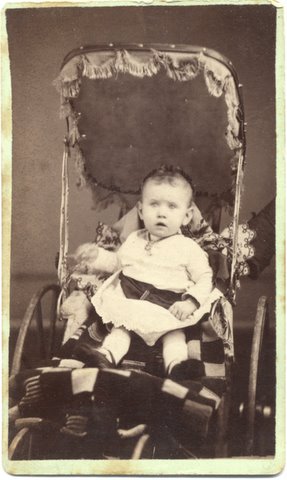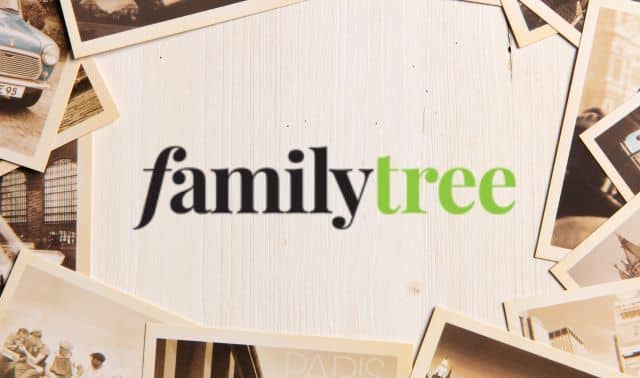Sign up for the Family Tree Newsletter Plus, you’ll receive our 10 Essential Genealogy Research Forms PDF as a special thank you!
Get Your Free Genealogy Forms
"*" indicates required fields
In honor of Women’s History Month, I’ve decided to run another picture of a woman and baby—but this time only part of the woman appears in the picture.
I’ve taken to categorizing images like this as “hidden mothers.” There’s no way to say for certain the arm extending into the carriage to brace this child belongs to its mother, but it’s either a cautious mother, a nursemaid or a photographer’s assistant. I vote for the mother.
Before I start dissecting this picture—do you have any images with partial women in them? I’d love to see them and feature them next week. Send them to me.
So who’s this darling tot? Gwen Prichard doesn’t know. A genealogical Good Samaritan gave her the album it was in after finding it in an antique trunk in California. Several of the people are identified members of the Godfrey and Locke families who, according to the photographer’s imprint, posed for pictures in Jonesburg, Mo.
The woman who purchased the trunk wanted family members to have the photo album so she contacted Jonesburg Historical Society who in turn suggested she write to Gwen. It’s one of those odd serendipitous genealogical connections.
Gwen thinks the album belonged to Olive Cornelia (Locke) Smith (born in 1861) based on the identified images. Now she’s trying to figure out who else is represented. This is one of the mystery pictures. There are four photos on a page—this baby, an older child, a man and a woman. They may be the baby’s parents, but before jumping to conclusions let’s date this picture.
-
While the baby picture doesn’t have a photographer’s imprint the other three were taken in Moberly, Missouri.
- The light green card stock of this small (4” x 2 ½”) photo was typical in the mid to late 1870s.
- The toddler wears a white dress with colored sash and a necklace. This child’s attire is also typical for the early to mid-1870s.
These last two details date the picture, but it’s the baby carriage that draws our attention. The first carriage that could be pushed was invented in 1848. Before this, baby carriages were drawn by ponies and other small animals. Newer carriages, like this one, enabled mothers, nursemaids and nannies to stroll with their children. This fringed model looks similar to the horse-drawn surrey carriages used by families in the 1870s. The top would protect the child from the sun. Babies faced front to be admired by passersby.
This particular carriage is well padded with an animal fur lining and a checkerboard knitted blanket. A scalloped edged embroidered cloth decorates the inside. The woman has her hand underneath this cloth supporting the baby allowing us to see the beautiful stitching. You can see other examples of early carriages on the Wisconsin Historical Society website.
While this is a picture puzzle, the date brings Gwen one step closer to figuring out who it might be. This baby (probably a girl because her thin hair in parted in the middle) was born in the mid-1870s.
Anyone interested in helping me narrow the time frame? Check patent records to see if you can match up the design of this carriage. I’ll give you a hint: The leading baby carriage designer in this time frame was Adolph Meinecke. Don’t forget you can respond in the Comments field below.
ADVERTISEMENT





